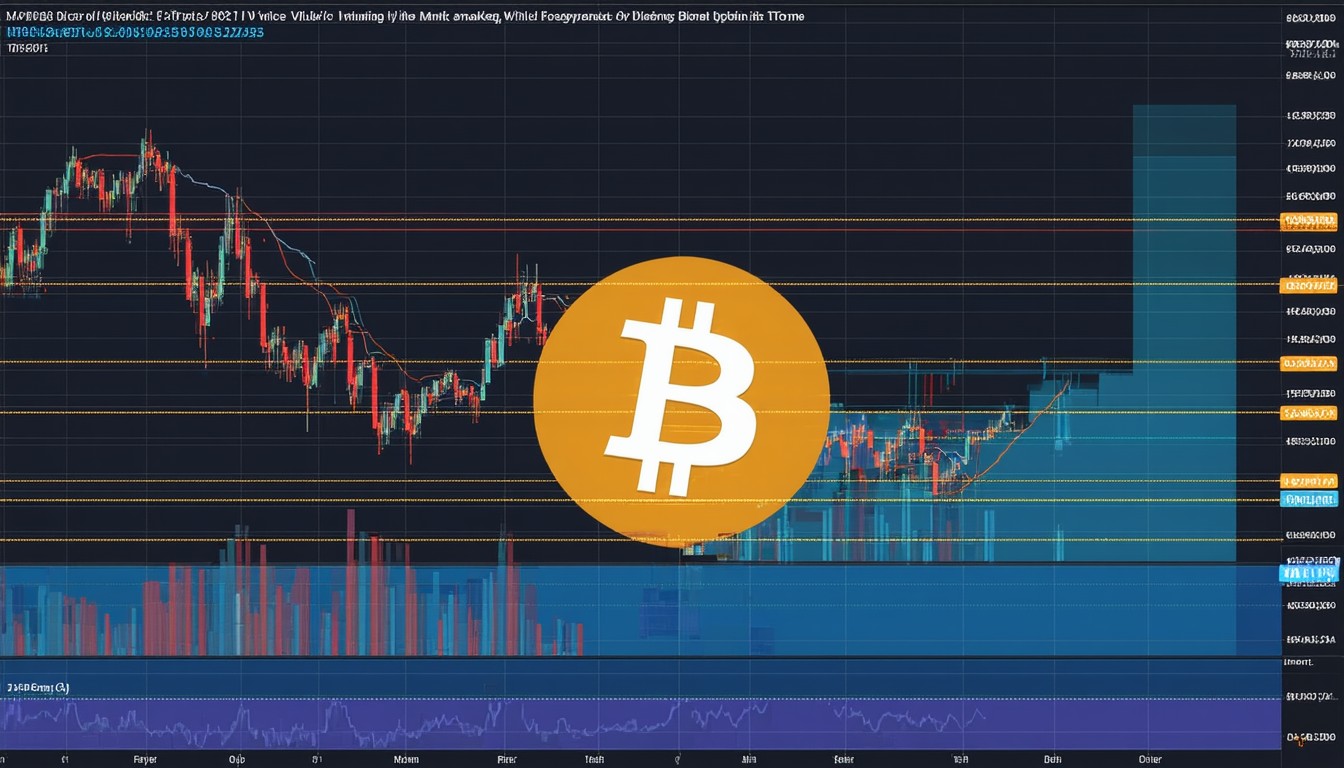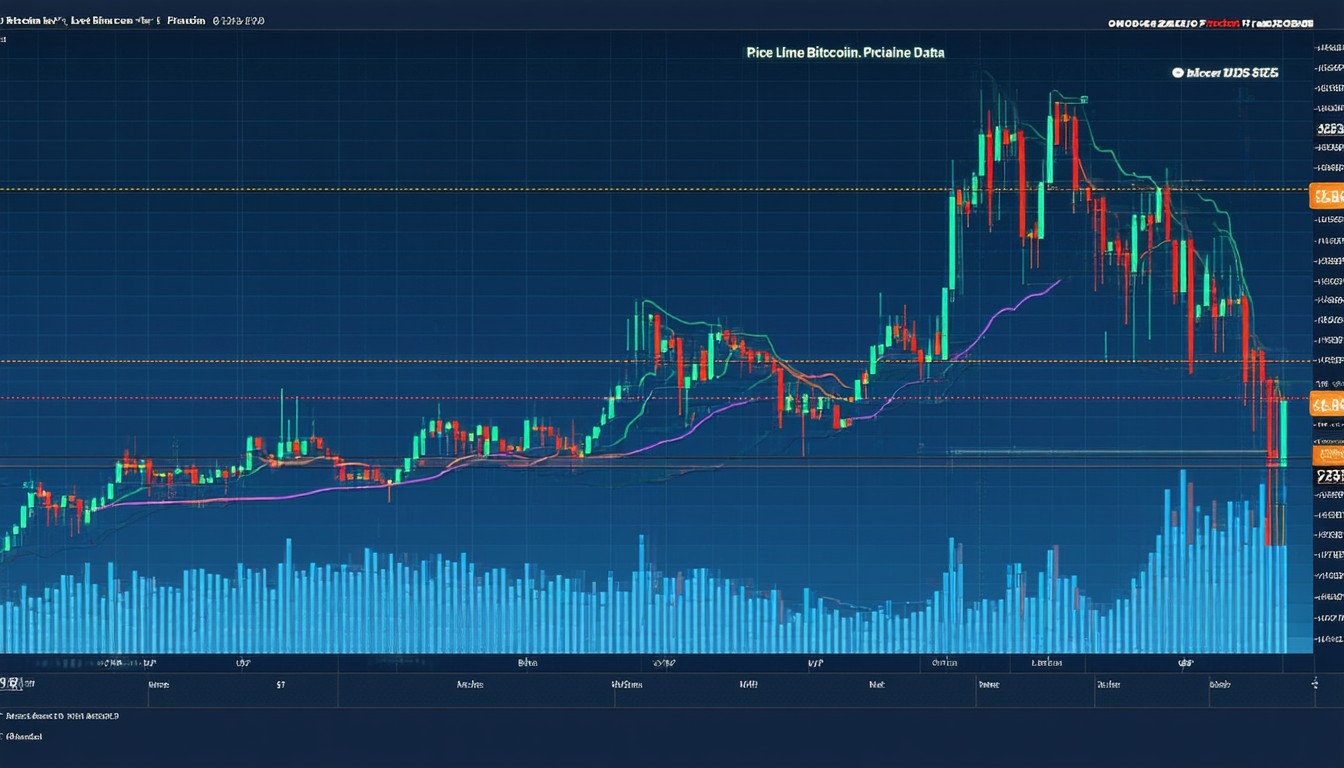Bitcoin, as the world’s most recognized cryptocurrency, commands ceaseless attention from traders, investors, and financial analysts. The appeal of “bitcoin price live” updates stems from Bitcoin’s relentless volatility, fast-paced market action, and its role as a bellwether for the broader digital asset ecosystem. Whether watched by institutional investors or retail traders, live Bitcoin prices serve as a real-time pulse of digital finance.
Over the last decade, Bitcoin’s value has surged from just a few cents to periodically topping tens of thousands of dollars. With each dramatic price swing—driven by global news events, regulatory changes, technological advancements, and shifts in market sentiment—the demand for accurate and timely price information only rises.
Beyond pure curiosity, real-time bitcoin pricing data facilitates high-stakes portfolio decisions, enables sophisticated risk management tactics, and offers a transparent view into the evolving narrative of decentralized finance. In the age of algorithmic trading and 24/7 global markets, having access to up-to-the-minute Bitcoin pricing is not just an advantage—it’s often a necessity.
How Live Bitcoin Prices Are Tracked
Recording the live price for Bitcoin means much more than listing a single number. Because Bitcoin is traded around the clock on hundreds of exchanges worldwide, each with its own supply, demand, and liquidity profile, the “live” price is an aggregated snapshot.
Aggregation Across Major Exchanges
Leading data providers, such as CoinMarketCap, CoinGecko, and TradingView, collect price feeds from a wide array of exchanges—Binance, Coinbase, Kraken, Gemini, and many more. These prices are weighted, often by trading volume, to reflect where most trades actually occur. This mitigates the impact of outlier trades or thinly traded markets that could otherwise skew the global price.

Tickers, Charting, and Data APIs
For traders and investors, live bitcoin prices underpin a suite of analytical tools:
- Live Tickers: Stream price changes in real time, often down to the second or millisecond.
- Interactive Charts: Offer candlestick and line charts with a range of technical indicators (e.g., RSI, MACD, moving averages).
- Data APIs: Power trading bots, portfolio trackers, and news alerts with continuous streams of pricing information.
This technical infrastructure forms the backbone of modern cryptocurrency trading strategies.
“In a market that never sleeps, real-time bitcoin price feeds aren’t just informational—they enable automated decisions, risk limits, and even compliance with regulatory reporting requirements,” remarks Alex Harris, a digital asset analyst at a major fintech firm.
The Role of Order Books and Trade Volume
Live price data is complemented by real-time order book snapshots and volume information. Order books reveal active buy and sell offers at various price points, giving insight into short-term support and resistance levels. Simultaneously, rising volumes on big moves can signal authenticity behind a trend, while low-volume moves may be prone to reversals or manipulation.
The Factors Influencing Bitcoin’s Real-Time Price
Understanding live price fluctuations means recognizing the variables that trigger them. Unlike traditional equities, Bitcoin operates outside centralized governance, and its price is acutely sensitive to a broad set of drivers.
Market Sentiment and Global Events
- Macroeconomic Uncertainty: News about inflation, interest rates, and monetary policy can send investors running to or from Bitcoin. In times of crisis, Bitcoin has variously been viewed as a “digital gold” safe haven or a speculative risk asset.
- Regulatory Announcements: Government stances—whether bans, approvals, or new tax rules—routinely cause price gaps and volatility. Even rumors of regulation from major economies like the United States, China, or the European Union can move the needle on live prices.
- Institutional Adoption: Major announcements from public companies buying bitcoin, major banks offering crypto services, or new Bitcoin ETFs draw waves of new money into the market—and can send prices surging in minutes.
On-Chain Data and Network Activity
Analysts also watch blockchain metrics such as hash rate, mining difficulty, address activity, and large on-chain transfers. An uptick in “whale” (large investor) activity, for example, might foreshadow impending price action.
Technical Trading Patterns
Many market participants rely on technical analysis, drawing conclusions from historical price patterns, support and resistance levels, and signals like moving average crossovers. These approaches, often encoded in trading algorithms, can accelerate price changes as multiple traders react to similar signals.
Why Real-Time Bitcoin Price Data Matters
Instantaneous access to bitcoin’s price has reshaped the behaviors and opportunities of everyone from day traders to Fortune 500 treasury managers.
Trading Strategies and Volatility Tactics
High-frequency traders and arbitrageurs depend on granular live data, seeking to capitalize on split-second price discrepancies. Meanwhile, more casual participants use real-time alerts for buy/sell triggers or to manage risk exposure in their holdings.
For algorithmic traders, even microsecond price changes can lead to considerable gains or losses. Real-time APIs feed directly into their trading bots, which execute orders faster than any human could.
Portfolio Management and Risk Mitigation
Institutional investors track live Bitcoin price streams not only for trading but also to meet regulatory obligations, calculate NAV (Net Asset Value), and maintain risk thresholds. Rebalancing can happen in real time as asset allocations shift in response to fresh market data.
Market and Media Impact
Major surges or crashes are instantly reflected in global headlines—affecting not only cryptocurrency portfolios but also the perception of the digital asset industry at large. Mainstream coverage amplifies volatility in a feedback loop as new investors flock in or retreat, guided by live price updates.
Real-World Scenarios: How Bitcoin Price Live Data Shapes Decisions
Consider the context of a sudden regulatory action. In early 2021, when a major national government announced new restrictions on cryptocurrency trading, Bitcoin’s live price plunged by thousands of dollars within minutes. Investors with access to real-time quotes had the opportunity to react quickly—selling into liquidity or hedging exposure, while those relying on delayed data often suffered larger losses.
Alternatively, imagine a scenario where a major corporation declares a significant bitcoin purchase. The live price may spike within minutes of the announcement, prompting a surge in trading activity and providing nimble traders with significant profit opportunities.
Risks, Limitations, and Best Practices in Relying on Live Prices
While live Bitcoin pricing is a fundamental resource, it is not without challenges:
- Data Delays and Errors: Even top data sources can experience pauses or glitches under extreme market stress, leading to temporary mismatches across platforms.
- Exchange Reliability: Prices from exchanges with low liquidity or questionable security may deviate from the aggregated global average.
- Emotional Trading: Watching every tick can promote reactionary, fear-driven decisions rather than sound, long-term strategy.
Best Practices for Monitoring Live Data
- Cross-Reference Multiple Sources: Use at least two reputable platforms to avoid price anomalies.
- Set Smart Alerts: Employ alerts for key price levels instead of monitoring continuously, reducing emotional overreaction.
- Incorporate Broad Context: Pair price data with qualitative news feeds and on-chain analytics for richer decision-making.
Summary and Strategic Outlook
Real-time Bitcoin price data is the foundation of modern crypto trading and investing. The infrastructure powering “bitcoin price live”—from exchange aggregators to interactive charting platforms—has matured significantly, empowering individuals and institutions alike. However, amid exciting opportunities, the risk of over-reliance and the possibility of technical hiccups urge prudence.
Ultimately, whether tracking Bitcoin for speculation, strategic asset allocation, or industry insight, leveraging live data must be balanced with discipline, due diligence, and a recognition of the unpredictable forces that drive digital assets.
FAQs
How is the live Bitcoin price determined across exchanges?
Aggregators calculate the live price by averaging data from multiple major exchanges, often adjusted for volume to best reflect where the most significant trades happen globally.
Why do Bitcoin prices sometimes differ between platforms?
Variations can occur due to differences in exchange volume, liquidity, and occasional latency. Smaller exchanges or those in different regions may post slightly different rates due to these factors.
What are the main risks of relying only on live price data?
Exclusive focus on ticks can encourage impulsive decisions, ignores qualitative factors (like major announcements), and is subject to potential data lags or discrepancies during volatile periods.
How can I use real-time Bitcoin prices for trading?
Real-time prices are crucial for active trading, setting automated buy/sell orders, managing stop-losses, and executing arbitrage strategies where speed and accuracy are paramount.
Do live prices predict future Bitcoin trends?
Live prices reflect current market conditions but don’t predict future moves. Investors should combine price data with broader analysis—news, on-chain metrics, and technical trends—for informed decisions.








Leave a comment